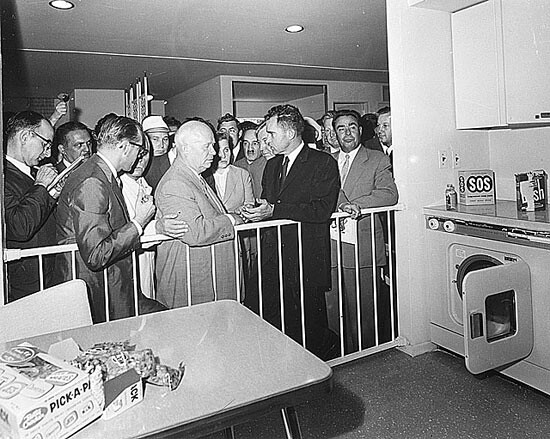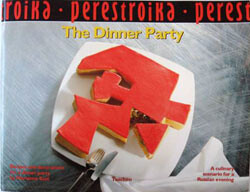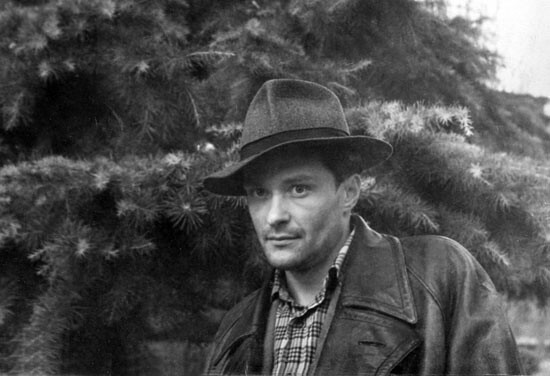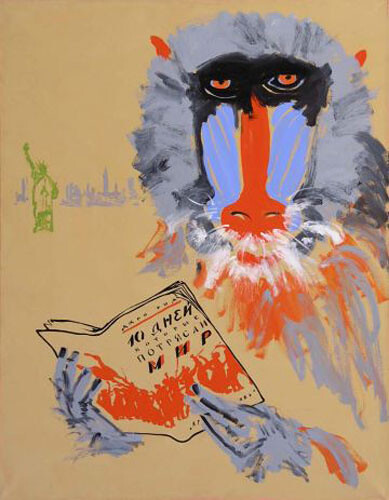1. The Traps of Transitioning to “Democracy”
The Soviet Union is considered to be a classic example of a disciplinary society, and we are used to regarding it as a backward social system in comparison to the post-disciplinary societies of liberal democracy.
What for the Western states took place as a gradual development towards post-disciplinary conditions after the Second World War became shock therapy for the former Soviet states after 1989. The entrance into the “civilized democratic world” had to be accomplished via measures that were often extreme and exceptional; these entailed monetizing the commonwealth, cancelling social guarantees, imposing a forceful shift to a market economy, and permitting the spread of criminal businesses.
Such vicious features of the post-Soviet “transition to democracy” were often eradicated by severe and authoritarian measures; these measures were taken either in the name of integration into the world of “Western liberal democracy” (as was the case with Georgia during the presidency of Mikheil Saakashvili), or (as was the case with Russia in the 2000s), they were taken to control and nationalize businesses whose complete economic freedom and social irresponsibility led to a drastic impoverishment of the population. Nevertheless, the early post-Soviet criminal economy, as well its eradication, were equally violent and hardly democratic; furthermore, they coincided with neoliberal shifts in Western governments. So the pursuit of Western social democracy in post-socialist states turned out to be somewhat belated, since the social democracy programs in the Western neoliberal societies themselves shrunk and became obsolete. Here one has to face the fact that, while promoting the social democratic agenda or the socially engaged legacies of avant-garde art in post-Soviet regions, Western non-governmental and cultural institutions claimed to export and disseminate something that they themselves were no longer able to practice or believe in.


As the result, the drive to become a transparent and modernized society manifests in the features of control and in the police state far more in post-Soviet societies than in Western democracies. It is for this reason that the memory of a disciplinary society with its shadowy backdrop might paradoxically seem more attractive and desirable for many. This is the reason why, since the late 1990s, the enlightened neoliberal technocracy in the West has had little effect on Russia’s paternalist oligarchy. Legalized, “civilized” capitalism seems far harsher than the domestic, corrupt clans of the post-Soviet economy. It would seem that some amount of corruption keeps things more “human,” less alienated—an apparent excuse for the rampant corruption that characterized the shadow economy of the Soviet and post-Soviet period.1
As Slavoj Žižek often repeats, autocratic systems presuppose the hidden perverse within society, while the permissiveness of post-disciplinary control—which allows for the open and democratic disclosure of perversions and the violations within them—is much more ruled and governed. Foucauldian research into neoliberal control societies has also revealed precisely how the transparent control society internalizes the exposure of perverse or subversive elements. Contemporary art practices also thematize how subversive, transgressive gestures or critical tactics are folded into the rhetoric and ideology of the Western liberal open society.
Interestingly, however, in post-Soviet societies such subversive practices or the exposures of trauma are very rare. Even in the case of actions by the art-groups Voina or Pussy Riot, the result of intervention is quite different from Western art-practices of subversion. The actions of Voina, in fact, reproduce the perversion inherent in Russian political power itself. Likewise, while Pussy Riot’s intervention at the Christ the Savior cathedral seems at first sight to be a classic gesture of violating the frames of established power and sanctity, it is rather the power itself here that is already transgressive and perverse; and the resistant practice reveals the power’s perversion by mimicking it—the fake way the government or clergy pray or stage their “chastity.” Furthermore, the members of the group socially and politically represent the rhetoric of democratic values and civil society, calling for transparent elections to kick out the perverse “sovereign” who declared his illegal presidency almost as a state of exception.
This is why the question becomes: How can one subvert or transgress the force that can withstand much stronger and more sacrilegious subversion? On the one hand, we know how often criticism has been prohibited in post-Soviet countries. But at the same time, these cases of prohibition do not mean that the authority is against perversion or subversion, but rather that the authority itself must remain the principal source of such perverse acts. The Russian conceptual writer Vladimir Sorokin has shown well in his writings how the drive for perversion manifests itself in the behavior of an authoritarian and sovereign power. In this case, perversity and transgression have nothing to do with freedom, even if the stance remains quite different from the post-Fordist Western treatment of the role of subversion.
This distinction suggests vastly different genealogies and epistemologies for notions of power, freedom, and the general (the common) in, on the one hand, post-socialist and former socialist ethics, and, on the other, Western liberal democracy or even Western post-Marxist theory.


Voina group, Dick captured by KGB, 2011. Graffito opposite to the former KGB headquarters in St. Petersburg.
2. The Grounds for Controversial Epistemologies
Post-socialist critical studies associates too many features of the former socialist societies with totalitarianism and its vices. The critique of modernism in Soviet aesthetics, and the mistrust of psychoanalysis or post-structuralism, are regarded as the result of prohibitions imposed on culture by the party, or of Marxist-Leninist dogma. But all those restrictions that we condemn in historical socialism have deeper roots; they do not stem simply from authoritarian limitations against freedom, but from different historical paradigms of emancipation that the socialist East, on the one hand, and the liberal capitalist West, on the other, adhered to.
I will dwell at least on a few of these epistemological differences. But before I do that I would like to mention a discussion initiated by Boris Buden, who claims that the post-communist condition is over.2 This claim is very important for the former socialist Eastern European countries to precipitate their integration into the united Europe, into what Buden calls “the only possible modernity” as against the erroneous Eastern socialist modernity. The Western modernity, being rather time than space—is able to sublate all identities and even make all other discourses on modernity and emancipation appear local. Historical socialism in case of such approach – despite its discourses of equality, modernity and universality—is regarded as the local and peripheral case of modernity.
Termination of the post-communist condition facilitates overcoming the endless political immaturity and not yet readiness for democracy in which the post-socialist regions are constantly blamed. According to Buden via ending the post-communist narratives of transition the East could at last stop catching up with the West, so that both—“East” and “West”—would find themselves in one temporal regime of historical development. But is not such stance, while criticizing the implicit colonialism of Western democracy, acknowledging it as the only paradigm of development, for the sake of which all the legacies and experiences of historical socialism have to be sublated and put null and void?
As a result—from the point of view of both pro-Western quasi-democratic politics and leftist critique—the former Soviet states are obliged to completely reject their memories or practices of emancipation that were actively pursued in former Soviet societies—despite authoritarian policies of historical socialism. They are to be swept away on behalf of Western democratic governmental policies, but also on behalf of the Western critical and leftist micro-political practices.
This is due to the fact that historical socialism is predominantly associated with nothing more than Russian imperialism, with Stalinism and its command economy, with censorship in culture, repressive cultural politics, and so forth. Little attention is paid to the fact that numerous breakthroughs in science, culture, and education, or the discrete features of an unsegregated society, were concomitant with the nonprofit economy and with the very ethical and political premises of socialism itself.
In the end, the imperative to install a post-Soviet amnesia in relation to historical socialism turns out to be neocolonial—on the part of Western governments, but also on the part of the Western leftist, critical emancipatory discourse. Even more strangely, during the rise of postcolonial theory, the attitude of the West to its former colonies was much more permissive and less categorical. While in the post-socialist experience, cultures that were not completely identitarian were simultaneously labeled as a local identity and condemned for the ferocity of their universalism and idealism.
Such attitudes evacuate the post-Soviet states’ social democratic agendas—both in the parliamentary system and the civic and intellectual sphere. If the Eastern European cultural and political framework was epistemologically quite close to the critical discourses of resistance in the Western 1960s, and could somehow reconstruct them in the mode of the post-1989 left-liberal agenda (as in case of Krytyka Polityczna in Warsaw), the former Soviet states were detached from both the Western political and cultural practices of the 1960s and the emancipatory features of their own cultural legacy. This is why neoliberal “democrats” or nationalist-conservative elites turned out to be the main political agents in post-Soviet politics. In the meantime, the left agenda has been appropriated by party bureaucrats like Gennady Zyuganov in Russia, or has dispersed into smaller movements.


In such conditions, it becomes important to develop an analysis that evades both Cold War discourse and nostalgia alike. While Foucault’s cultural archeology did this for Western European disciplinary societies, this kind of work—apart from certain sporadic efforts—has not fully addressed post-Soviet societies. Why is it necessary? Why can’t we simply claim to be part of the global pro-Western democracy, where even terms such as “Former West” are used to describe itself?
The ethical differences between historical socialism and Western liberal democracy or its critical traditions arise not so much from ex-socialist authoritarian Politbureau decisions as from deeply different epistemological interpretations and treatments of crucial philosophical notions of consciousness, the unconscious, power, culture, psychics, the idea, the ideal, the common, and freedom.3
There are concrete examples of how certain notions that appeared in Western philosophy were accepted through one interpretation in the West, while the post-revolutionary socialist project took up another. For example, we all remember how socialist culture mistrusted the concept of the unconscious. With the emergence of psychoanalysis in Europe, it was never clear whether psychoanalysis studied the unconscious to tame it, to crystallize it via language, to enable the subject to analyze her/his own self and thus clarify its uncontrolled forces—as Thomas Mann believed—or, on the contrary, to access the non-rational and the unconscious as freedom.
Later studies in post-structuralism showed the unconscious to be synonymous with creative practices and their irrational backgrounds, as well as with political potentialities. The unconscious as a Freudian clinical category acquired its ontological grounds in Lacan’s studies and came to stand for political and creative potency in works by Foucault, Derrida, Lyotard, Deleuze, and Butler. Lyotard discovered the libidinal unconscious of the capitalist economy, marking the inevitable libidinal impact of creative production in the conditions of capitalism. For Deleuze, schizophrenia and the unconscious are also inherent to capitalist production, just as the unconscious can also develop machines of subversive resistance in an expanded field for creative productivity. And let us not forget the affirmative role of insanity in Foucault’s studies and the role of individual psychology in articulating the subversive potentiality of gender in Butler’s theories.
Lacan’s psychoanalysis declared that the unconscious was organized like a language, but could also enable a transgressive break beyond language, beyond power, beyond consciousness. Even in post-Marxist theory, the idea that language sustains certain pre-linguistic drives has come under attack. In his book Multitude: Between Innovation and Negation, for example, Paolo Virno criticizes the notion of language as the function of a rational apparatus hampering instinctive pre-linguistic, pre-individual, pre-conscious drives that can only generate utter collectivity and emancipation.4 For him, these pre-individual drives initiating intersubjectivity, political emancipation, and artistic and performative innovation are beyond linguistic and cultural acquisition. They are produced in the neurobiological pre-rational sphere, in the biological realm of reflex and instinct.
And what do we see in Marxist Soviet philosophy, in works by Evald Ilyenkov, for instance, but a completely different treatment of the unconscious and of consciousness?5 The potentiality for freedom does not reside in the unconscious, but rather in consciousness, which can only enable an individual to connect with the general (the common) and the ideal. Freedom is not something acquired via subversive or contingent moves, but complements a will towards effort and labor. Ilyenkov, not unlike the post-structuralists, tries to reflect on what comes before and beyond language. However, for the post-structuralists, language happens to be a cultural order, a metaphysical structure, a restraint. For Ilyenkov, language is, on the contrary, empirical—much more so than idea or thought. When he claims that thinking is possible before and without language and is not reduced to it, his argument is with language philosophy. But what he places before language is neither the unconscious nor the irrational, nor the archetypes or the instinctive, but human history, logic, thinking, and culture as potentialities of the generic and the ideal—an impossible concept for Western thinking of the 1960s and ‘70s.6


3. Evald Ilyenkov’s Materialist Notions of the Ideal and the General
The ideal, being one of the principal notions in Ilyenkov’s philosophy, marks important approaches to culture, art, and social theory in the Russian-Soviet experience. Both psychoanalysis and post-structuralism locate the idea and the ideal in the superego, i.e., super-consciousness, claiming it as a metaphysical category, detached from empirical reality. Therefore, when the unconscious becomes the embodiment of creativity and freedom, the categories of the general (the universal) and the ideal are automatically rejected as redundant for political as well as artistic creativity.
In socialist aesthetics and ethics it is the contrary: the category of the ideal is not placed in the superego as some transcendental abstraction, but is part of everyday life, of communication, production, and intersubjectivity. In this case, there is no split between body and idea, since the ideal manifests itself via material externality and occupies the “body” and its empirical existence. Such an understanding of the ideal does not position it as something sublime or as superseding reality.
As a matter of fact, the material presence of the ideal in the everyday unites very different experiences of socialist culture: classical avant-garde, early socialist realism, OBERIU, Andrei Platonov’s literature, and the cinematography, philosophy, and literature of the 1960s and ‘70s. (But it also refers to Hegel’s argument about the coincidence of a thing (matter) with the notion).
Ilyenkov’s point was that the teleology and genealogy of the ideal and the general (the common) come before language.7 It precedes semiotic or linguistic realizations of thinking, culture, and history.8 This refers to experiments of the psychologists Alexei Leontiev and Alexander Mesheriakov, who worked at an experimental school for deaf, blind, and mute children.9Their experiments enabled Ilyenkov to claim that even with very limited capacities for speech or visual perception (since these children could only rely on tactile senses and muscular reflexes), it is possible to develop not only capacities for survival but the experience of the worldly, the generic. This means that pre-linguistic human motor functions can comprise the teleology of the ideal and the general even before an individual masters speech and language. And these pre-linguistic functions are not at all confined to reflexes and psychic operations.


But how can these very specific interpretations of the ideal, consciousness, and the general be understood today, especially considering how much they differ from their post-structuralist or post-operaist applications?
The Western interpretations of idealism produce the ideal as transcendental individual consciousness, as the inward form of the “I.” It resides within immaterial speculative concepts, while the external world has to do with material objects. That’s why the ideal is understood as the subjective and speculative idea of a thing or of a world in one’s head.
But, following Marx, Ilyenkov claims something quite different. He dialectically connects thinking, consciousness, and external material reality. The ideal is not an imaginary, speculative category, because it has an available presence and exists as the objectified form of human activity, becoming the things of the outer world due to labor. The ideal is generated neither psychically, nor in the individual consciousness, but in the outer world, and is created historically via human labor. And consciousness is the effect and the outcome of such an apprehension of the ideal, not vice versa—which is to say that it is not the ideal’s speculative generator.10
So, the ideal is the reflection of objective reality in human activity and its transformation by human activity. For example, material culture and its history are nominally material, but insofar as they exceed their nominal status they are also ideal, while also being a material “body.”11
The dimension of the ideal is the human being’s teleological correlation with outer reality via labor that is not codified biologically. For example, the fact that animals build dwellings for survival is codified biologically, but for Ilyenkov the fact that human beings eat from plates and produce plates is not codified biologically, and is thus not the consequence of a human being’s bodily morphology. So the newly-born human being enters the world of social human life with her/his unformed consciousness and only acquires consciousness in interrelation with the outer world of history, culture, society, and labor. The capacity to use plates instead of eating without them is the ideal. The ideal even precedes language and its role. Thus, the world of objects produced by a human for humans via labor—i.e., objectified forms of human activity, which is culture, and not just the natural forms or genetic inheritance—generate human consciousness and will. From this standpoint, one recognizes Marx’s famous statement that the social being defines consciousness.
However, the question here is why Ilyenkov, as well as other Soviet thinkers, needs the notion of the ideal to describe the social dimension of labor and culture—which in post-structuralism or post-operaism are either seen as the embodiments of horizontal, network-related, immanent experiences, or are rejected as the embodiments of power and its apparatuses.
In this way, Soviet philosophy claims the concept of the ideal—the category that is denigrated in Western philosophy of the 1960s and ‘70s. Yet Ilyenkov’s interpretation of the ideal becomes something completely different from the classic idealistic treatment of this term. For Ilyenkov, it is what is generated in human life and existence by labor production—i.e., by the transformative social activity that he regards as teleological.
In discussing teleology—which is often erroneously identified with totality or holism—Ilyenkov uses the following example: a building cannot be reduced to its constituent bricks or material elements. A building is its material, concrete, and other empirical elements, but it would be impossible without pre-empirical projection.12 This pre-empirical, teleological element is always there in the objects produced by labor, as well as labor actions. Labor is teleological because it presupposes the projection of a thing to be produced, and this is what makes it ideal.13 Bricks and their constellation are the empirical elements here, while the building is the concreteness of the ideal. So it is not an abstract horizon that recedes as one tries to approach it. On the contrary, it is material—but so much so that it instigates the move towards realization. Ilyenkov says that the ideal is the image of bread in the head of a baker or a hungry person.14 This is similar to Marx’s statement that even the worst architect, as opposed to the bee, first builds the hive in the head.
Interestingly, teleology is evacuated from many post-operaist labor theories for being a return to truth claims or metaphysics. Ilyenkov meanwhile insists on the correlation of labor and culture precisely for being teleological activities—and this correlation is very characteristic of socialist thought. In fact, recent Western philosophy interprets both notions quite negatively—with the creative aspects of labor, whether voluntary or not, considered automatically alienated or absorbed by cognitive capital, and culture as just the fossilized, digested remainder of once lively artistic activity. Also in the modernist tradition, labor and culture typically belong to different realms of social life, with labor considered to be low and associated with routine, with the commodity, means, or with mediation. Culture is meanwhile something valuable, albeit mostly for a bourgeois elite. This is why a contemporary artist is in a position to profane both culture and labor, to transgress them in order to discover fields of new experiments and experiences that evade culture and labor alike.
But for Ilyenkov, labor, culture, the ideal, and the general are very close to each other. Culture is not just a legacy of valuable products and labor is not only a technical medium to produce something. Socialism is actually the space where culture and labor can overlap—where labor is not alienated and divided, and where culture is not merely a superstructure of the economy and its surplus, not a supplement to labor’s routine and boredom, but the creative activity of a post-economic society with little to no surplus value. Culture is not reduced to the everyday, but rather everyday labor is “elevated” to society’s ethical needs. It sounds quite utopian, but in fact this approach was developed in the works of Soviet thinkers such as Ilyenkov, Jurij Davydov, and Mikhail Lifshitz, and shared by the majority of cultural workers of the period.
Culture, for Ilyenkov, is not an archive of past achievements, a record of different traditions and lifestyles, or acquired knowledge that makes its owner socially privileged. Rather, it has to do with the urgent necessity for non-utilitarian values in the life of a society. It is something that rests on the premises of ethics much more than aesthetics, or rather it makes the two inseparable. For Ilyenkov and other Soviet aestheticians, culture is not something opposite to art, but is the condition that makes art possible, since it is synonymous with the human aspiration for the general.
The notion of the general often suggests the analogous, similar features of the many, but can also be seen as a primary resource from which different branches stem, not unlike the notion of the universal. It can also be the nominal sum of something or somebody—an individual, for instance. In civil rights, the general in often understood this way, as the common.15
But for Ilyenkov, the general or the common is not individual consciousness repeated many times, whether concatenated or united. Neither is it an entity or unity understood as the principal invariant or example of less important empirical cases and details. Rather, it is the dimension of the non-individual present within the individual—separate from her/his nominal involvement in communicative or collective practice. It is in fact due to this non-individuality in the individual that collective practice can be productive in the first place.
Thus the general is a category of logic and ethics rather than of mathematics or metaphysics. It presupposes being for the other—not only for human beings but things as well. For example, two chairs are less general than a chair and table together, or the reader and the book, or the employer and the employees. So that generality—commonality—is not just a sharing or collecting of something, but is rather a connection of two or more things brought together by their mutual lack, and thus their mutual need. Generality connects to amplify one’s lack in the other. And such an interpretation of the notion of the general is an important invention of Ilyenkov, influenced by Hegel’s notion of non-self being.
The notions of the unconscious, consciousness, the general, and the ideal touched upon above are actively applied, or disputed, in post-industrial theories. It is therefore important to mark the differences in their epistemological genealogies within socialist and non- or post-socialist contexts. Revisiting historical socialism in this way is not an act of nostalgia, but rather a means of marking the contradictions endemic in Western discourses of modernity, post-modernity, and anti-modernity from the 1960s to the present.
That is probably the reason for the results of the recent elections in Georgia, with the pro-Kremlin oligarch taking over the former president’s team and the neoliberal technocrats defining their political program as pro-Western democratic modernization.
Boris Buden, Zone des Übergangs: Vom Ende des Postkommunismus (Zones of Transition: On the End of Post-communism), (Zuhrkamp, 2009).
Such epistemological incompatibility marks the gaps not only between historical socialism or Western democracy and Western left theory. It is also the kind of epistemological rupture that exists between Hegel and Deleuze, Badiou and Virno, Marx and Heidegger.
P. Virno, Multitude: Between Innovation and Negation (Los Angeles: Semiotext(e), 2008), 169–189.
Evald Ilyenkov, Soviet-Russian philosopher (1924-1979). He used Marxist theory to develop materialist interpretations of Hegel. See English translations at →. Among his works are “Dialectics of the Ideal” (ca. 1960), Dialectics of the Abstract and Concrete (1960), and The Universal (1974).
E. Ilyenkov, “Dialectics of the Ideal,” in Philosophy and Culture (Moscow: Political Literature, 1991), 229–270, 262–267.
In the English translation, this notion of “vseobshee” (or, in German, “Allgemein”) is translated as “the Universal.” However, “the genera” or sometimes “the common” would fit the Russian notion of “vseobshee” (as well as Hegel’s “Allgemein”) better.
The difference with Virno here is that Virno, while locating the common in the sphere of neurophysiology and reflexes (as the pre-linguistic and pre-rational category) interprets it in favor of pre-rational, pre-cultural physiological and instinctual contingency, while for Ilyenkov the pre-linguistic realm can be symbolic and ideal.
Alexei Nikolaevich Leontiev, Soviet psychologist (1903–1979), disciple of A. Luria and L. Vygotsky. Author of the books On the Consciousness of the Learning (1947), Intellectual Development of a Child (1950), Activity, Consciousness, Person (1977), and Will (1978). Alexander Ivanovich Mesheriakov, Soviet psychologist (1923–1974), disciple of A. Luria and I. Sokoliansky. In 1960 he founded a laboratory for the research of teaching methods for the deaf, blind, and mute children at the Institute of Defectology in the Academy of Sciences, and in 1963 opened a school for deaf, blind, and mute children in Zagorsk. He is the author of The Image in the Psychics of a Blind and Deaf Child (1960), Psychic Development in the Conditions of Sensor Defects(1965), and The Dimension of Probability in the Signal Perception of the Deaf and Blind Children (1970).
E. Ilyenkov, “Dialectics of the Ideal,” 263.
Ibid., 250–251. Ilyenkov claims that even such Hegelian modes of the ideal as the form of thinking, or the syntactic form, or Marx’s form of cost in the economy didn’t appear or develop dependent on the individual consciousness and psychics, but were molded in the objective outer world, although with the participation of human consciousness. Like present day speculative realists, Ilyenkov insists that there is a material world as it exists, independent from its mediated correlation with the social and cultural forms of the experience. But if for speculative realists such assertion means that all other elements—human, cultural, social—should be separated from the contingent immanence of the matter, Ilyenkov thinks that the material independence of the world is dialectically intertwined with the socially organized world of human culture.
E. Ilyenkov, “On the General,” Philosophy and Culture (Moscow: Political Literature, 1991), 320–339.
This is the stance that Deleuze would never accept, because he would reject the molar definition of any activity and would not agree with superimposing any notion or term over the process of production. He would also never define any creative production as labor.
E. Ilyenkov, “On the Materialist Understanding of Thought as of a Subject of Logic,” in Philosophy and Culture (Moscow: Political Literature, 1991), 223.
Paolo Virno, when juxtaposing the notions of the general and the universal, says that the general for him means contingent concatenation and sharing between separated singularities. Pascal Gielen and Sonja Lavaert, “The Dismeasure of Art,” interview with Paolo Virno, Foundation Art and Public Space. See →.

